Have you ever stumbled upon a plant that looks like it’s straight out of a fairy tale? The Chinese Lantern Tree, known for its striking, lantern-like fruit, captures the imagination and brings a touch of whimsy to gardens. But what is the Chinese Lantern Tree, and why does it hold such a fascinating name? In this article, we’ll explore its unique characteristics, origins, and the cultural significance behind its charming title, helping you appreciate this extraordinary plant even more.
History and Origin of the Chinese Lantern Tree

Origin and Native Regions
- The Chinese Lantern Tree, scientifically known as Physalis alkekengi, boasts a rich history and origin steeped in cultural significance across Asia.
- Native to regions of China and Japan.
- Renowned for its striking, lantern-like husks.
- Encases small, orange berries.
Cultural Significance in Asia
- In traditional Chinese culture, the luminescent structures symbolize prosperity and good fortune.
- Often featured in festivals and celebrations.
- In Japan, the plant is associated with Obon, a festival honoring ancestors.
- Lanterns are used to guide spirits home.
Introduction to Europe
- Fascination with the Chinese Lantern Tree spread beyond Asia.
- It reached Europe in the 17th century.
- Captivated gardeners and artists alike with its unique aesthetic.
- Became emblematic of autumn, gracing gardens and floral arrangements with its fiery color and whimsical form.
Modern Popularity and Appeal
- In contemporary times, the Chinese Lantern Tree enjoys renewed popularity among enthusiasts of ornamental gardening and natural decor.
- Celebrated not only for its beauty but also for its cultural heritage.
- This blend of historical significance and modern appeal continues to foster a deeper appreciation for this enchanting plant.
- Recognized globally for its charm and decorative value.
Best Growing Season for the Chinese Lantern Tree
- The Chinese Lantern Tree thrives during the vibrant months of spring and summer, making this the ideal growing season for your plant.
- As temperatures rise and daylight lengthens, this deciduous beauty bursts into life, showcasing its iconic lantern-shaped fruits.
- During this time, ensure that your tree receives ample sunlight — aim for at least 6 hours a day — to promote robust growth and vibrant fruiting.
- Regular watering is also crucial keep the soil consistently moist but not soggy to support healthy development.
Indoor Care During Winter
- A cooler room temperature can mimic its natural dormant period, helping your tree conserve energy and prepare for the upcoming growing season.
- As winter approaches and temperatures drop, providing appropriate indoor care for your Chinese Lantern Tree becomes essential.
- Transition your tree indoors before the first frost, placing it in a well-lit area with indirect sunlight.
- tering during these colder months, allowing the soil to dry out slightly between watering’s to prevent root rot.
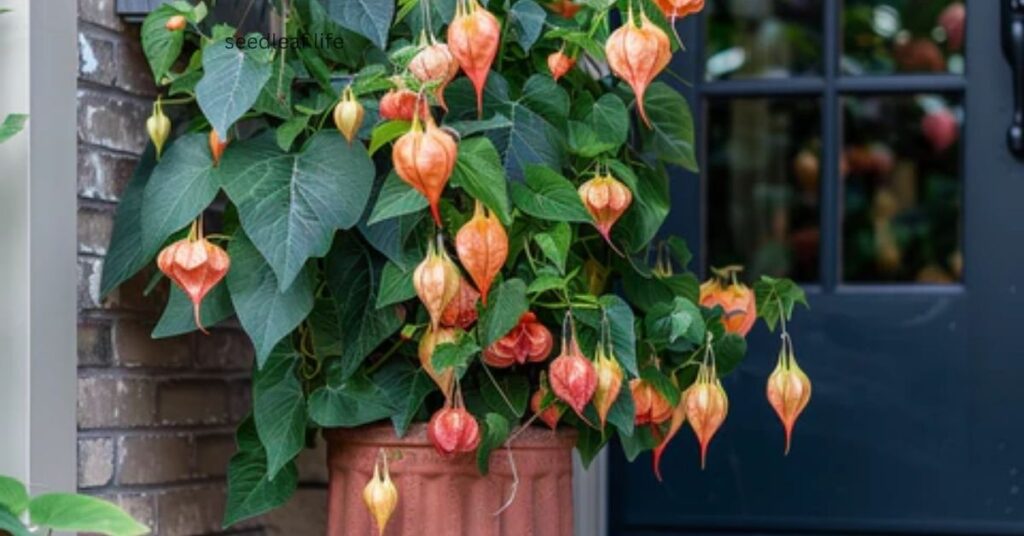
Seasonal Care Tips
- By following these tailored strategies, you’ll enjoy a flourishing Chinese Lantern Tree that will bring charm and color to your garden or home for years to come.
- To keep your Chinese Lantern Tree thriving year-round, consider seasonal care tips tailored to its needs.
- During spring and summer, fertilize every four to six weeks with a balanced fertilizer to encourage lush foliage and abundant fruit.
- In fall, as the leaves start to drop, reduce feeding to help the tree transition into dormancy.
- Additionally, prune back any dead or overgrown branches to promote airflow and maintain an aesthetically pleasing shape.
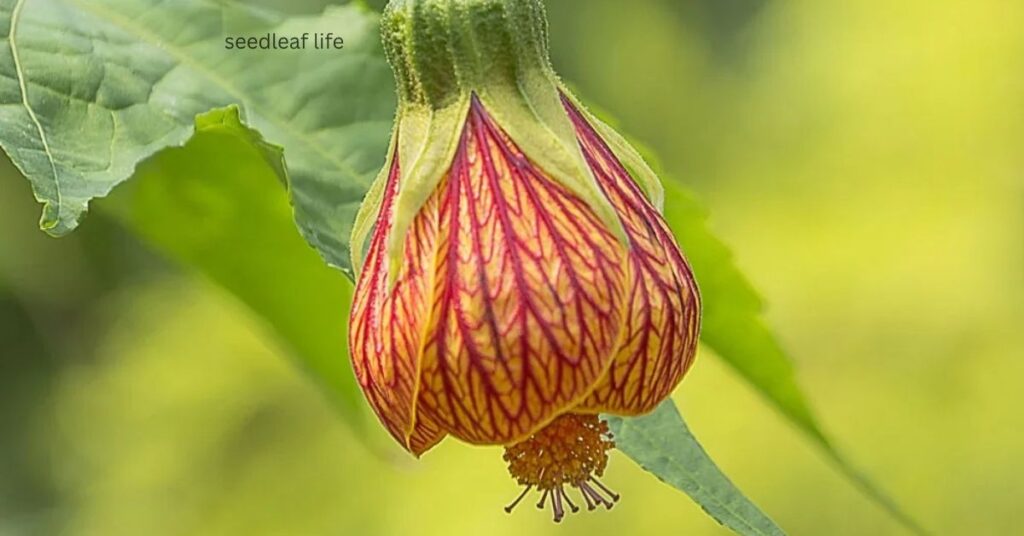
How to Water the Chinese Lantern Tree
Watering Schedule: Summer vs. Winter
- Check soil monthly, just enough moisture to prevent roots from drying out.
- Summer: Water every 1–2 weeks, depending on heat and humidity.
- Keep soil consistently moist but not soggy during active growth.
- Winter: Reduce watering as the tree enters dormancy

Importance of Drainage
- Ensure pots have adequate drainage holes.
- Use a well-draining soil mix to allow excess water to escape.
- Prevents root rot, a common problem for this species.
- Supports healthy root growth for thriving plants year-round.
Mistakes to Avoid
- Overwatering is the most common mistake — more water does not mean better growth.
- Failing to adjust watering according to seasons can hinder growth and vibrancy.
- Always check soil moisture before watering.
- Use your fingers to test soil — this simple habit maintains plant health.
Light, Soil & Care for the Chinese Lantern Tree
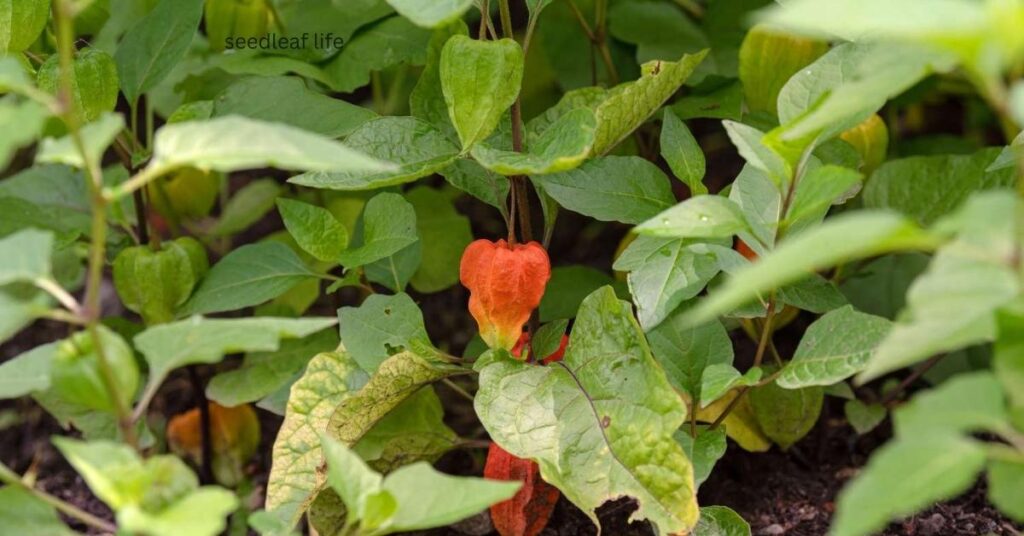
Ideal Sunlight and Temperature
- Thrives in bright, indirect light, tolerates some morning sun.
- Avoid harsh afternoon rays to prevent leaf scorching.
- Prefers temperatures between 65°F and 75°F (18°C–24°C).
- Stable conditions help maintain colorful foliage and lantern-like fruits.
Soil and Fertilizer Requirements
- Use well-draining potting mix enriched with organic matter.
- Ensures roots get both nutrients and oxygen, preventing root rot.
- Fertilize with balanced liquid fertilizer every 4–6 weeks during growing season.
- Avoid over-fertilizing — moderation promotes healthy growth.
Pruning for Healthy Growth
- Remove dead or damaged branches to encourage new growth.
- Best done in late winter or early spring for active growth rebound.
- Shape the tree by trimming excessive growth for better fruiting.
- Promotes air circulation, aesthetic appeal, and robust health.
Benefits of the Chinese Lantern Tree
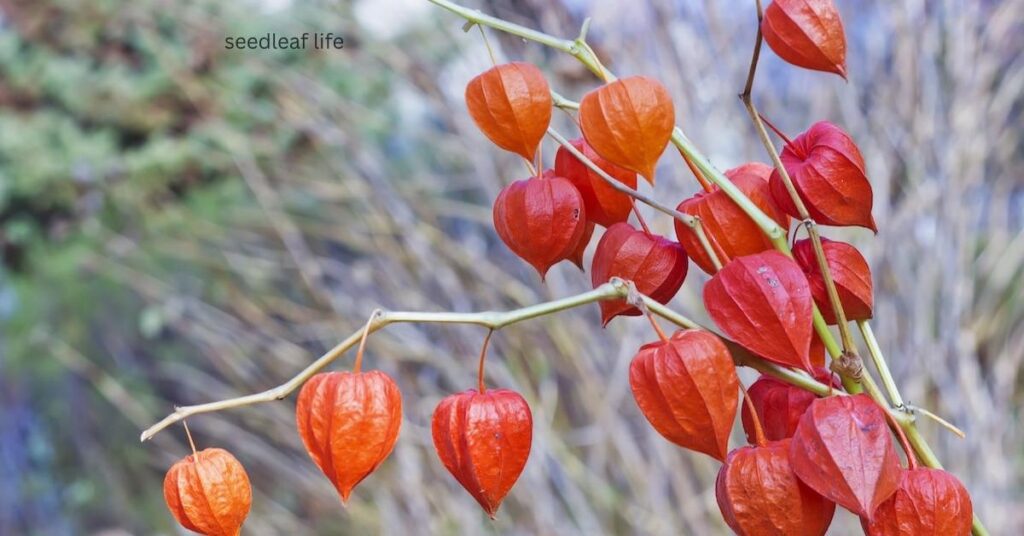
Ornamental Value
- Striking orange and red lantern-like husks create a stunning visual display.
- Enhances any garden or landscape with vibrant colors.
- Acts as a conversation starter for guests and visitors.
- Fully matures in late summer and fall, elevating backyard ambiance.
Indoor Freshness and Beauty
- Adds lush green foliage and bright lantern-shaped husks indoors.
- Enhances aesthetic appeal and creates a serene indoor oasis.
- Helps purify the air, contributing to a healthier environment.
- Placing near a sunny window creates a natural focal point.
Attracting Bees, Butterflies, and Birds
- Vibrant flowers attract bees and butterflies for pollination.
- Supports local ecosystems and improves garden productivity.
- Fruits attract birds, providing nourishment.
- Creates a lively, nature-filled atmosphere in your garden.
Beginner-Friendly
- Resilient and low-maintenance, suitable for new gardeners.
- Thrives in various conditions, from full sun to partial shade.
- Minimal effort required for growth and care.
- Offers a sense of accomplishment as you nurture it to maturity
Chinese Lantern Tree: Indoor vs Outdoor Growth
Indoor Growth in Cold Climates
- Monitor for pests with routine inspections.
- Thrives in bright, indirect light indoors.
- Prefers temperatures between 60°F–70°F.
- Use well-draining soil and maintain humidity with misting or a humidity tray.
- Regular pruning encourages bushier growth and better air circulation.

Outdoor Growth in Warm Regions
- Low maintenance makes it ideal for exotic flair in gardens.
- Thrives in full sun and well-draining garden soil.
- Produces vibrant lantern-like fruits for stunning garden displays.
- Natural outdoor conditions support pollination and healthy root development.
- Protect from extreme heat and drought with mulching and adequate watering.
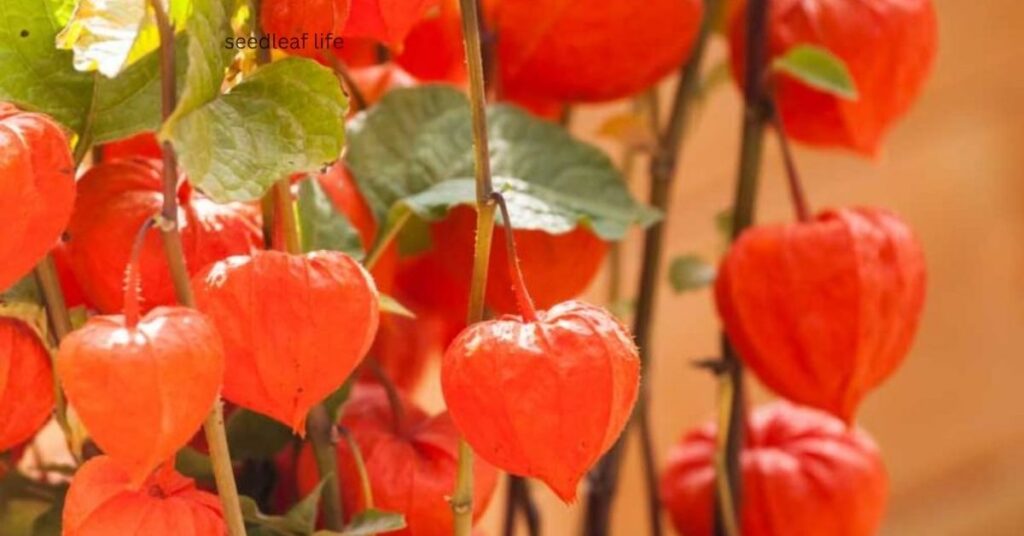
Quick Comparison Table
| Aspect | Indoor Growth | Outdoor Growth |
| Light Requirements | Bright, indirect light | Full sun |
| Temperature Preference | 60°F–70°F | Thrives in warm climates |
| Soil Type | Well-draining potting mix | Well-draining garden soil |
| Humidity | Needs higher humidity | Naturally adapts to local climate |
| Pruning | Regular for bushier growth | Less frequent, based on size |
| Pest Control | Routine inspections required | Natural predators help control |
Key Takeaways
- Understanding indoor vs outdoor care helps your plant thrive in any setting.
- Adjust light, temperature, soil, and pruning based on growth environment.
- Indoor plants need more attention to humidity and pests.
- Outdoor plants benefit from natural conditions but require protection during extreme weather.
Conclusion
To conclude, we’ve explored the numerous benefits of incorporating the Chinese Lantern Tree into your gardening endeavors. This guide emphasizes its beautiful lantern-like fruits, resilience, and low maintenance requirements, making it a favorite among gardeners worldwide. Its ability to adapt to different environments ensures that anyone can enjoy its beauty, regardless of their location or gardening experience. The Chinese Lantern Tree is more than just a plant, it’s a vibrant symbol of life and growth that can transform any garden into a picturesque haven. Don’t miss out on the opportunity to enrich your garden with this enchanting tree — get started on your Chinese Lantern Tree adventure now!

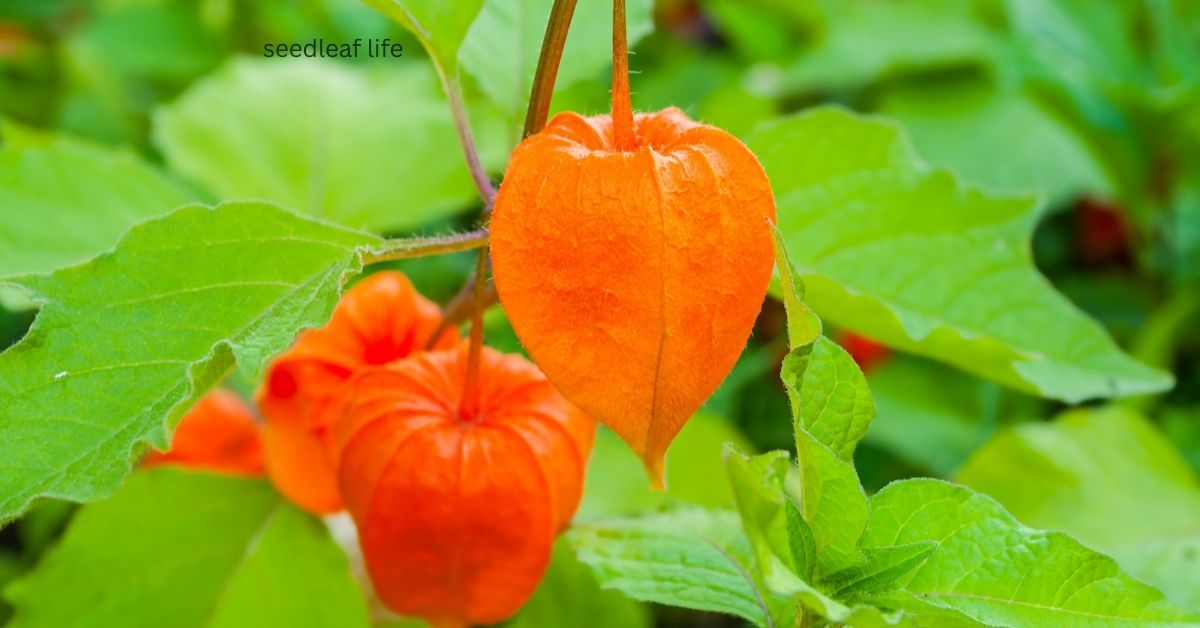
Leave a Reply
You must be logged in to post a comment.